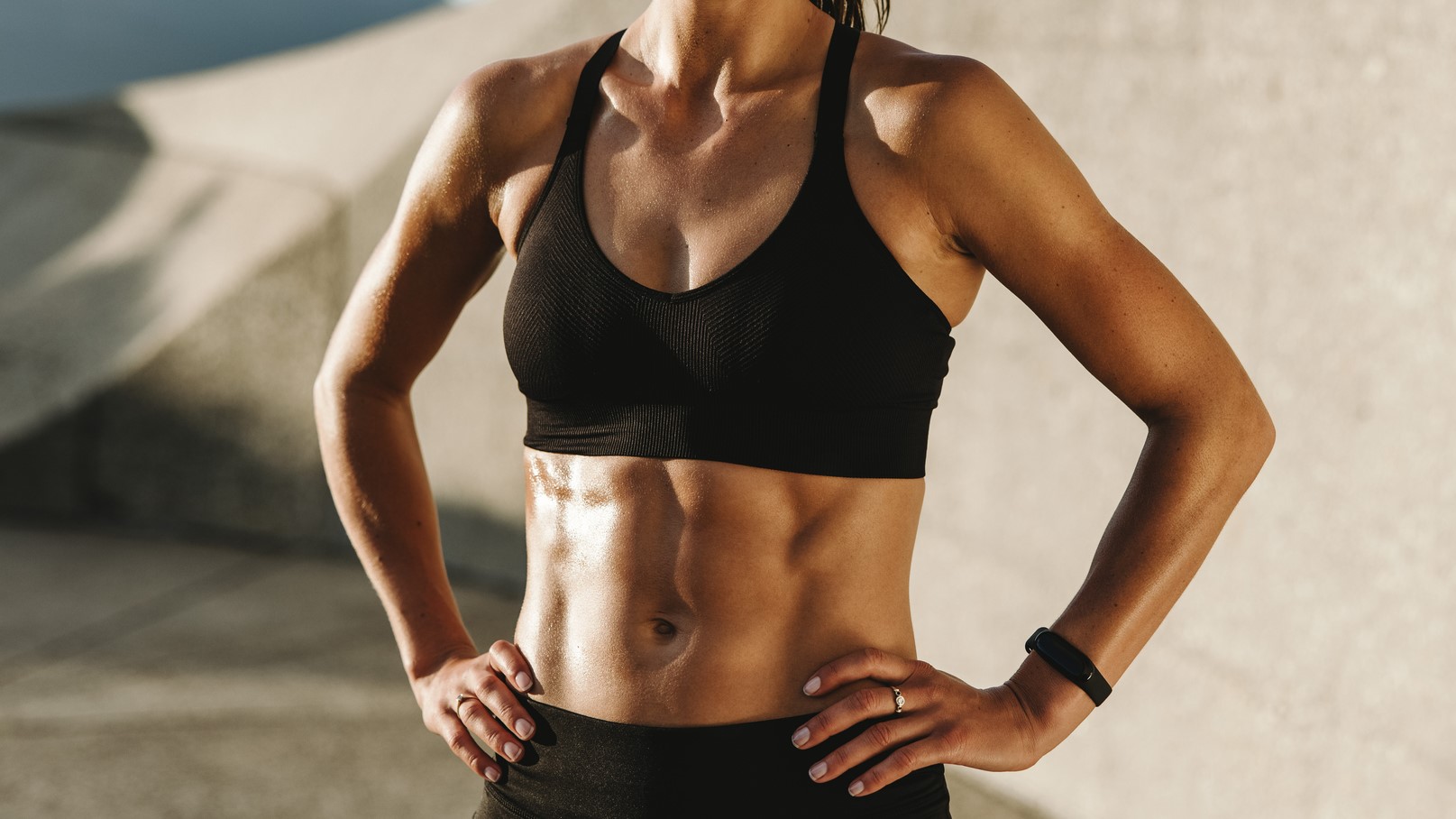Goodbye, sit-ups! I'm doing the 'corkscrew' exercise to sculpt strong abs — and you should too

If I say ab workout, the chances are you’ll immediately think of crunches and sit-ups, yet research has shown time and time again that these exercises aren’t the best when it comes to sculpting a strong and stable core. I’m 16-months postpartum, so strengthening my midsection is about far more than just building visible abs — it’s about toning and strengthening the muscles I use every time I bend down to scoop up my toddler, or carry him around on my hip.
But what should you be doing instead? According to the experts, the corkscrew exercise is the equivalent of doing hundreds of crunches. It’s a Pilates exercise that works all of the muscles in your midsection, as well as stretching the back, and improving spinal mobility. Sound too good to be true? Read on to find out how to do it, and what happened when I added it to my routine for a week.
What is the corkscrew exercise, and how do you do it?
The corkscrew exercise is an advanced Pilates move, which works your lower abdominals and oblique muscles, as well as stretching the back. It can be done with zero equipment, although you’ll probably want to lie on a yoga mat for this one.
A post shared by Cailin (@mvmtwithcailin)
A photo posted by on
Here’s how to do it:
- Start by lying on your back, with your legs extended out away from you and your arms by your side, palms flat on the floor.
- Engage your core, and tilt your pelvis slightly to ensure your lower back stays pressed into the mat.
- Extend your legs to a 45-degree angle, keeping your toes pointed and your thighs together.
- Lifting from your core, not your hips, raise your glutes off the mat, lifting your legs to a high diagonal above your body. Keep pressing down into your exercise mat with both arms.
- Lower down using the right side of your body. Your hips and pelvis should remain stable, think about lowering your torso instead, so the right hand side of your spine is lowering towards the mat.
- As you hit the mat, circle your legs around to the right. Think about drawing a circle on the ceiling with your toes.
- As you finish the circle, lift back up into the high diagonal and repeat on the left hand side.
- Keep switching sides for five reps on each side, then lower your glutes back down to the mat and hug your knees into your chest.
It’s worth mentioning that this is corkscrew level three — the most advanced version of the exercise. As with all Pilates exercises, there are three different levels: beginner, intermediate, and advanced. You should be able to do strong repetitions before progressing.
How to do a corkscrew level one:
- For this modification, you’re going to keep your lower back on the mat the entire time. Lie on your back, and tilt your pelvis slightly to keep your lower back imprinted into your exercise mat the entire time.
- Extend your legs to a 45-degree angle. If this is too much, or you feel a strain on your back or hips with your legs extended, keep a bend in your knees.
- Circle your legs to the right, keeping your hips still on the mat.
- Then circle your legs to the left. Keep switching directions.
How to do a corkscrew level two:
Get instant access to breaking news, the hottest reviews, great deals and helpful tips.
- This progression will teach you how to complete the lift needed for corkscrew level three.
- Start as you did in corkscrew level one, lying on your exercise mat and completing circles with your legs.
- Once you have completed a circle with your legs in both directions, engage your abs and lift your hips off the mat, pausing for a second at the top, before lowering your spine back down to the ground one vertebrae at a time. Remember, your abs should be doing the heavy lifting here. Make sure your legs are still before you complete the lift — don’t use the momentum or swing of your legs to raise your hips.
If you’re new to Pilates, or you’re returning to exercise following an injury or pregnancy, it’s always a good idea to chat to a professional before taking on a new workout routine. Even if you’ve been practicing Pilates for years, don’t jump in with corkscrew level three before making sure you’ve mastered levels one and two.
I tried the corkscrew exercise for a week — here’s what happened to my abs
Keen to find out more and really test the strength of my core, I unrolled my exercise mat and got to work. I’ve been practicing Pilates for the past fifteen years, and even did an intensive week-long Pilates course in Thailand, but the corkscrew isn’t an exercise I frequently come across in my Pilates workouts. I started with level one, which helped me get used to the feeling of circling my legs while keeping my hips stable.
After a day or so, I progressed to corkscrew level two, using my abdominal muscles to crunch my legs up off the floor. I had to really think about squeezing my abs and zipping up through my pelvic floor — something that is often weakened following childbirth. I have tight hamstrings, so I found I had to keep a slight bend in my knees throughout the exercise. I also found I had to really think about keeping my pelvis stable as I lifted my legs off the floor.
Finally, in the last few days of this challenge, I progressed to corkscrew level three, and wow, this exercise is no joke. There’s a lot to think about, and a lot going on as you circle and lift your legs, but I felt this in every muscle in my midsection, as well as down the backs of my arms. Like most Pilates exercises, the slower you move, the harder this move becomes — it’s all about moving with complete control. It won’t leave you a sweaty mess, but if you’re looking for an ab exercise that’ll torch your core, give this one a go.
More from Tom's Guide
- No, not push-ups — try the ‘steering wheel’ exercise to strengthen your upper body instead
- Slash your biological age by up to 16 years by doing this one thing during your daily walk — new study says
- I walked 5,500 steps with the Apple Watch 10 vs Garmin Forerunner 570 — here's the winner

Jane McGuire is Tom's Guide's Fitness editor, which means she looks after everything fitness related - from running gear to yoga mats. An avid runner, Jane has tested and reviewed fitness products for the past five years, so knows what to look for when finding a good running watch or a pair of shorts with pockets big enough for your smartphone. When she's not pounding the pavements, you'll find Jane striding round the Surrey Hills, taking far too many photos of her puppy.
You must confirm your public display name before commenting
Please logout and then login again, you will then be prompted to enter your display name.
